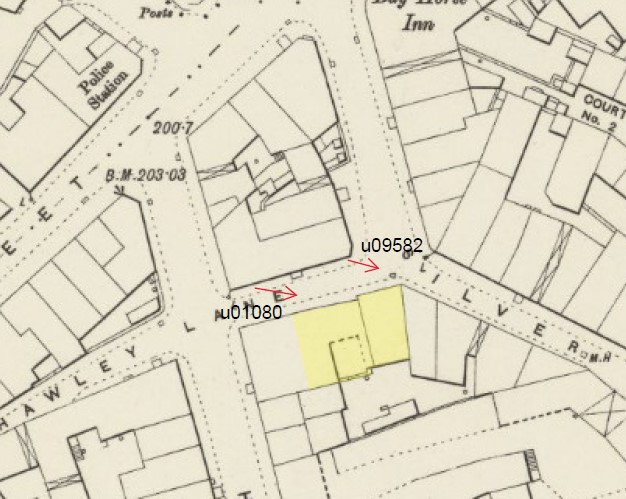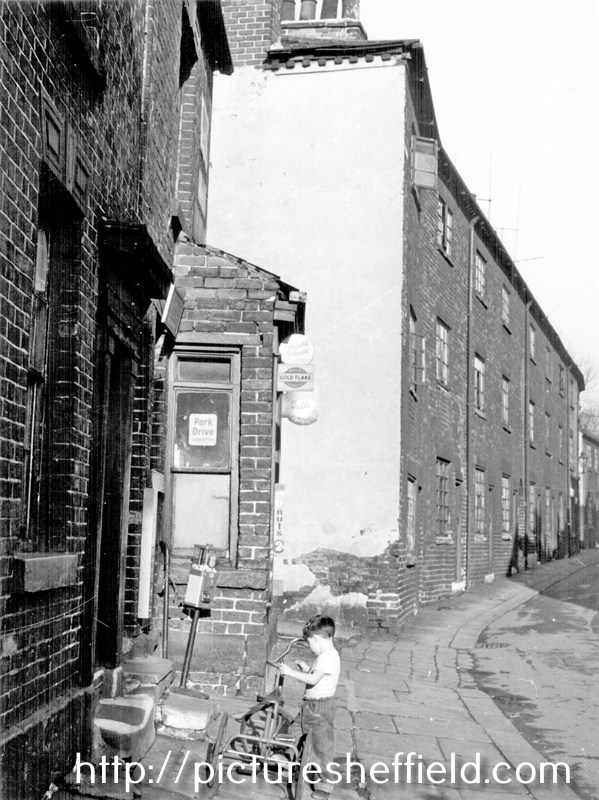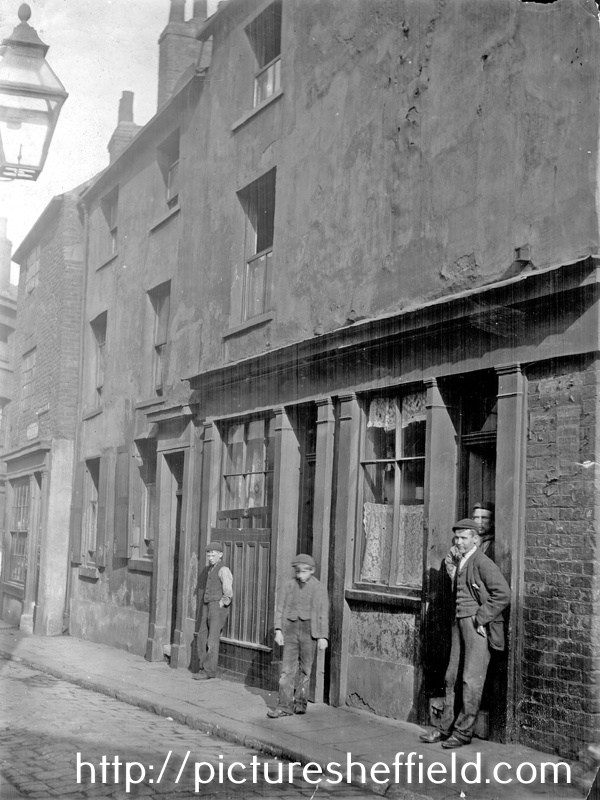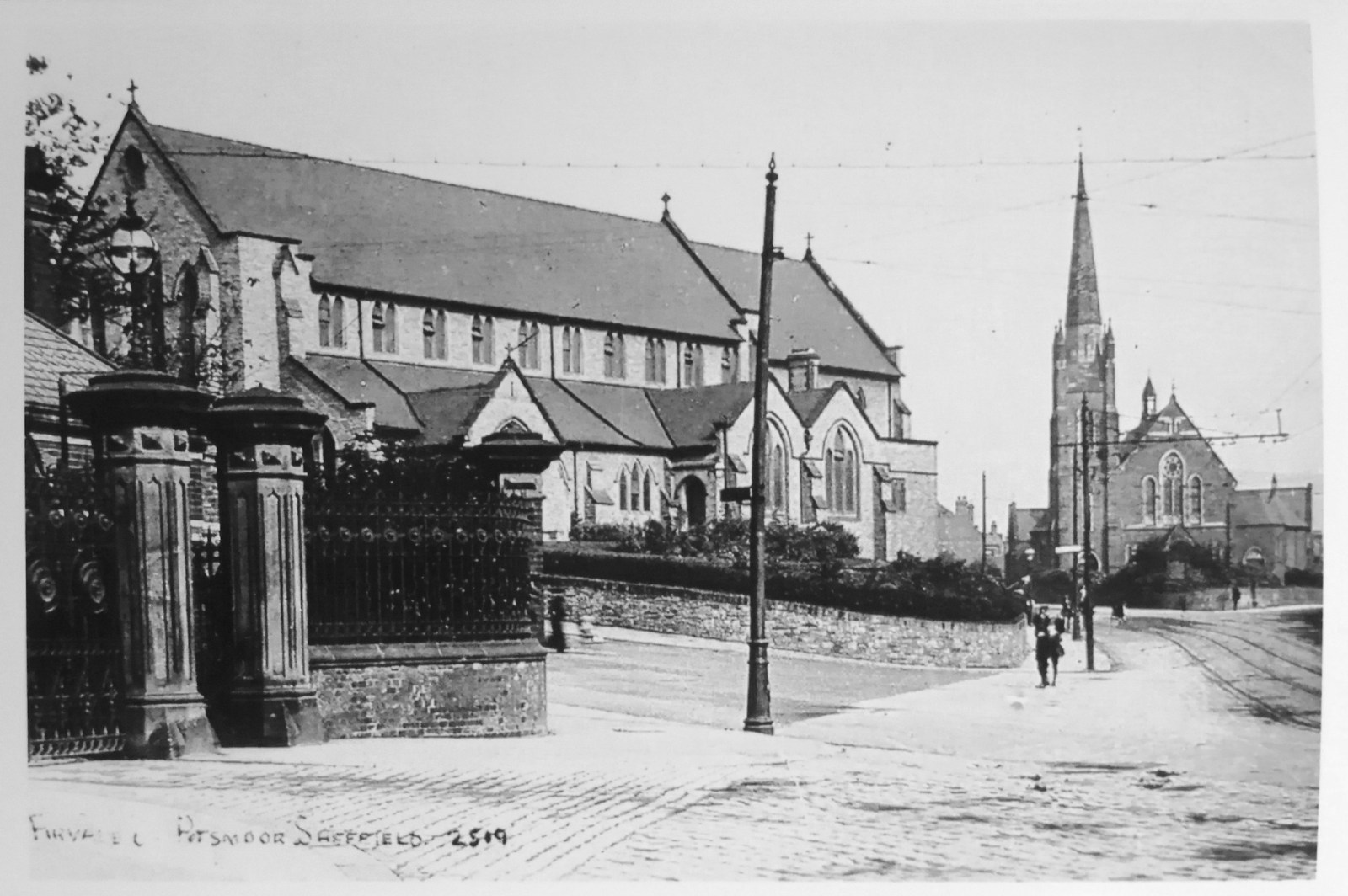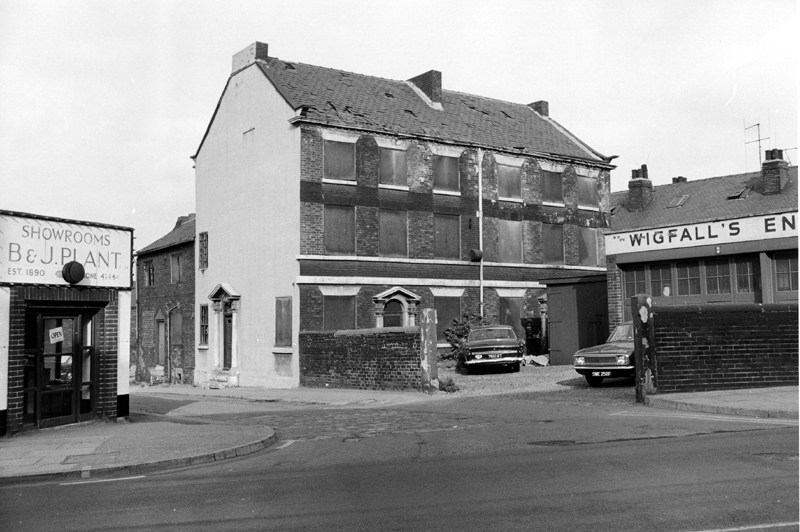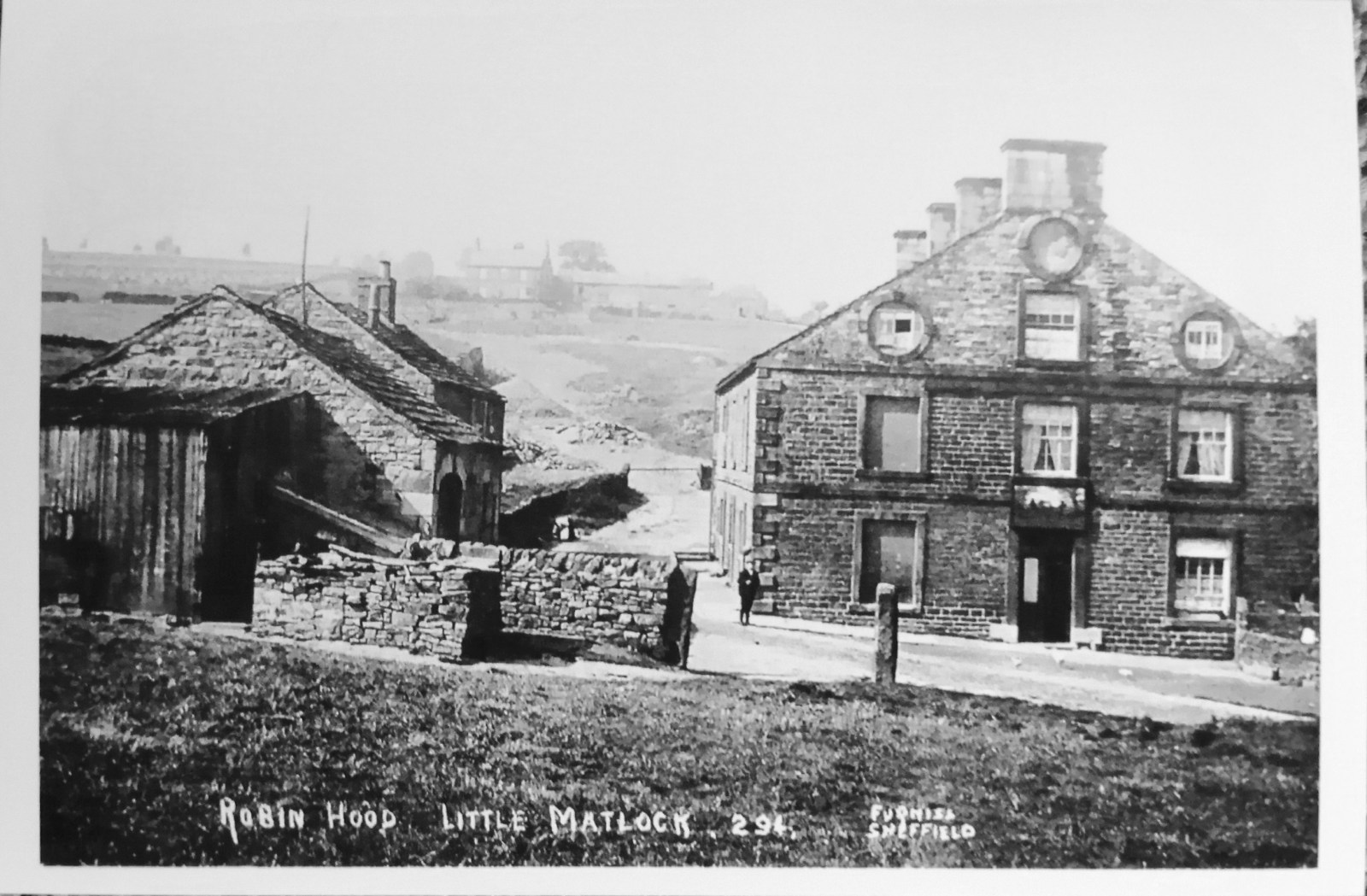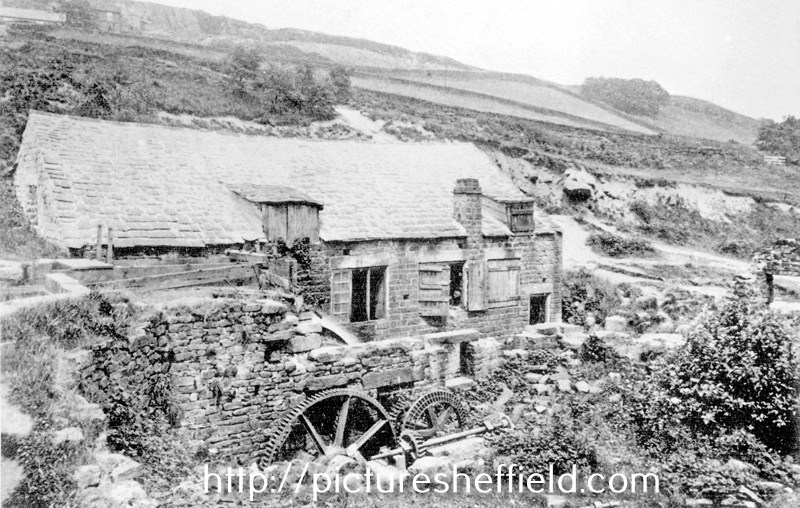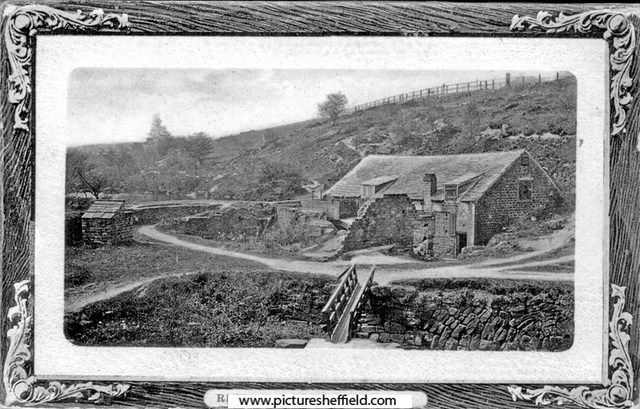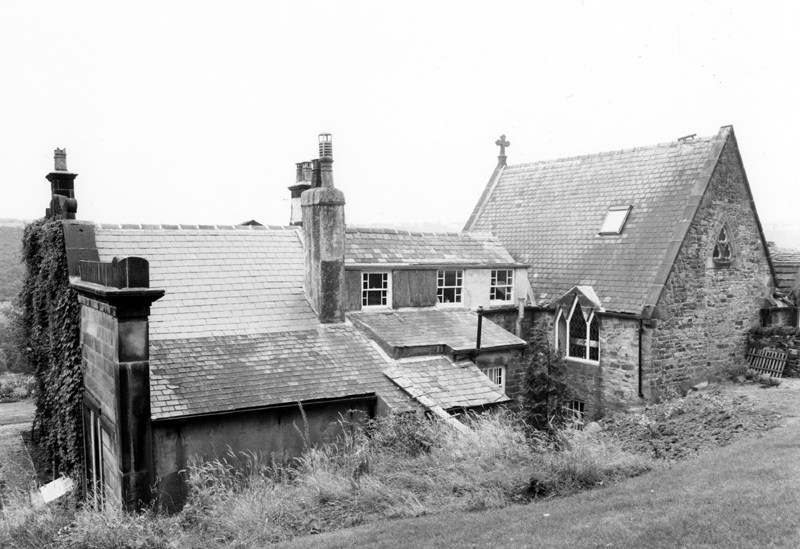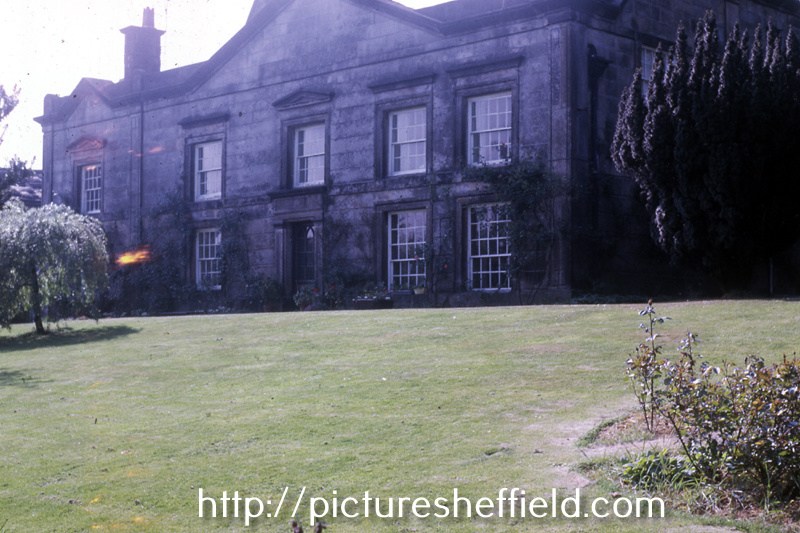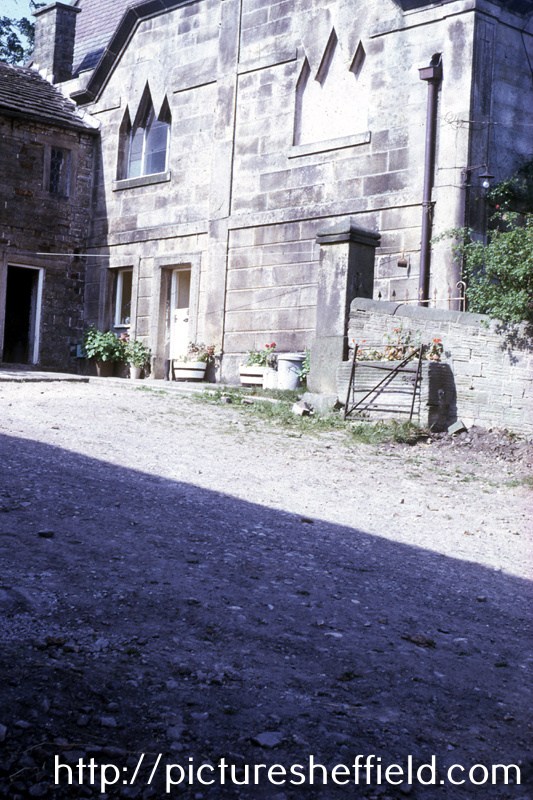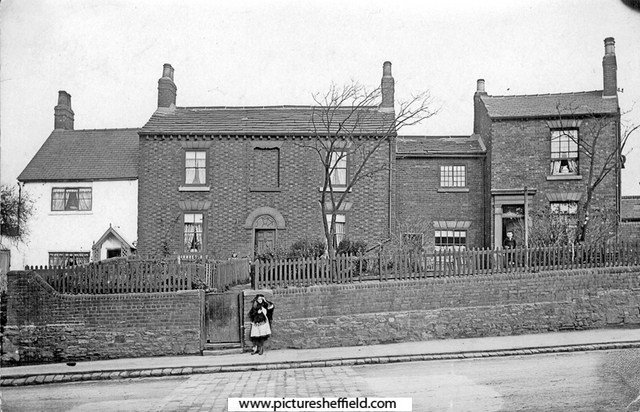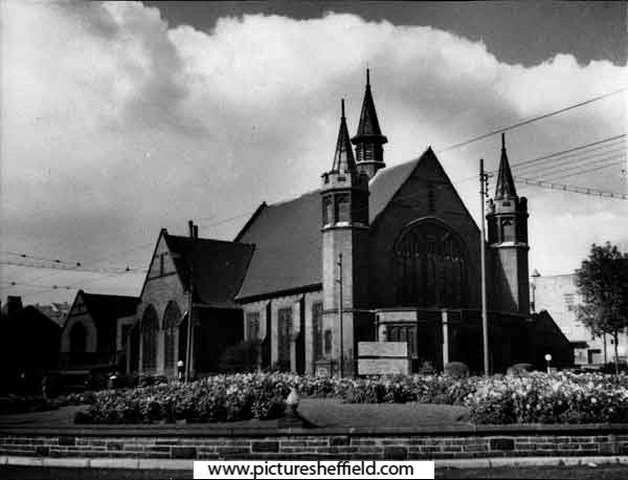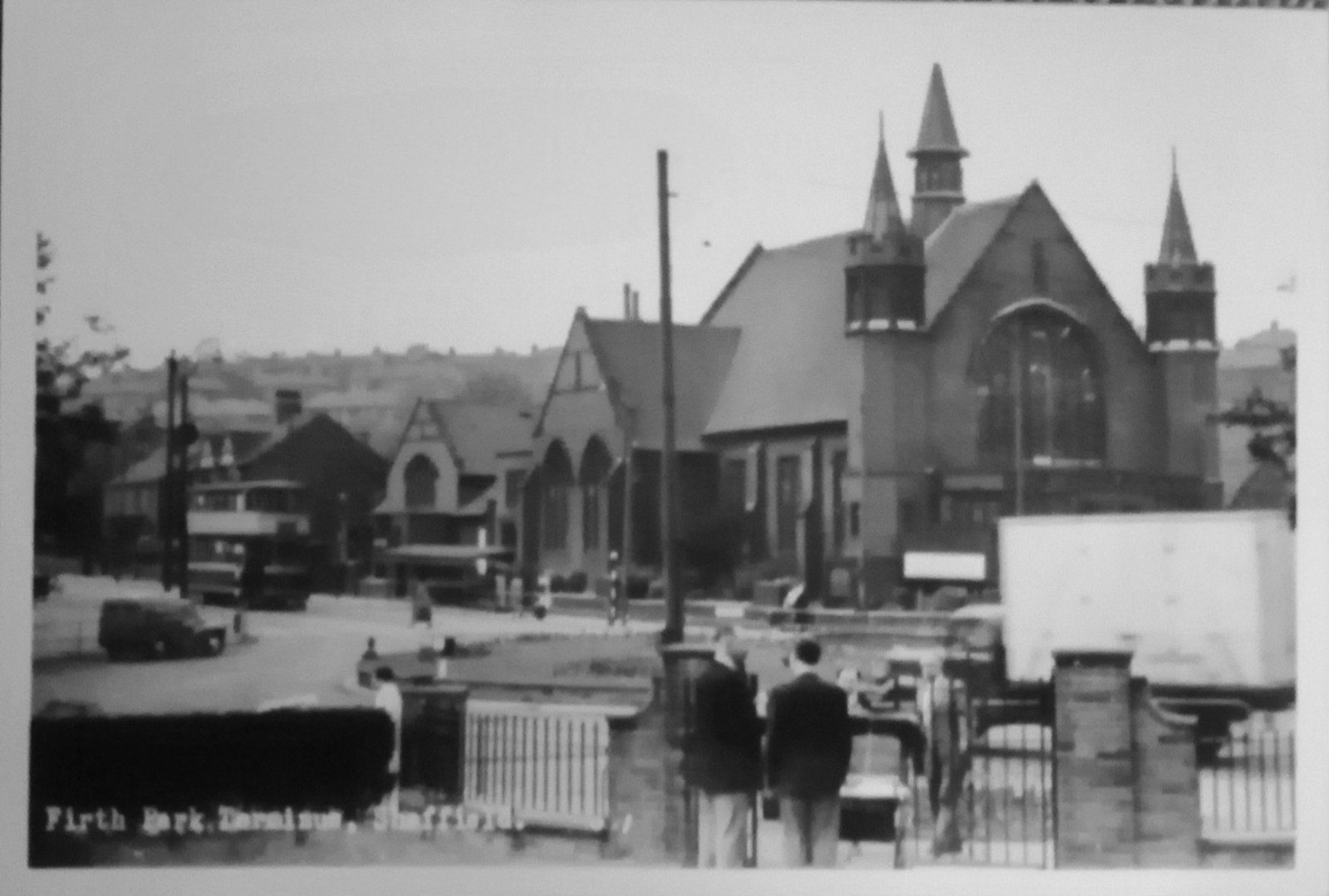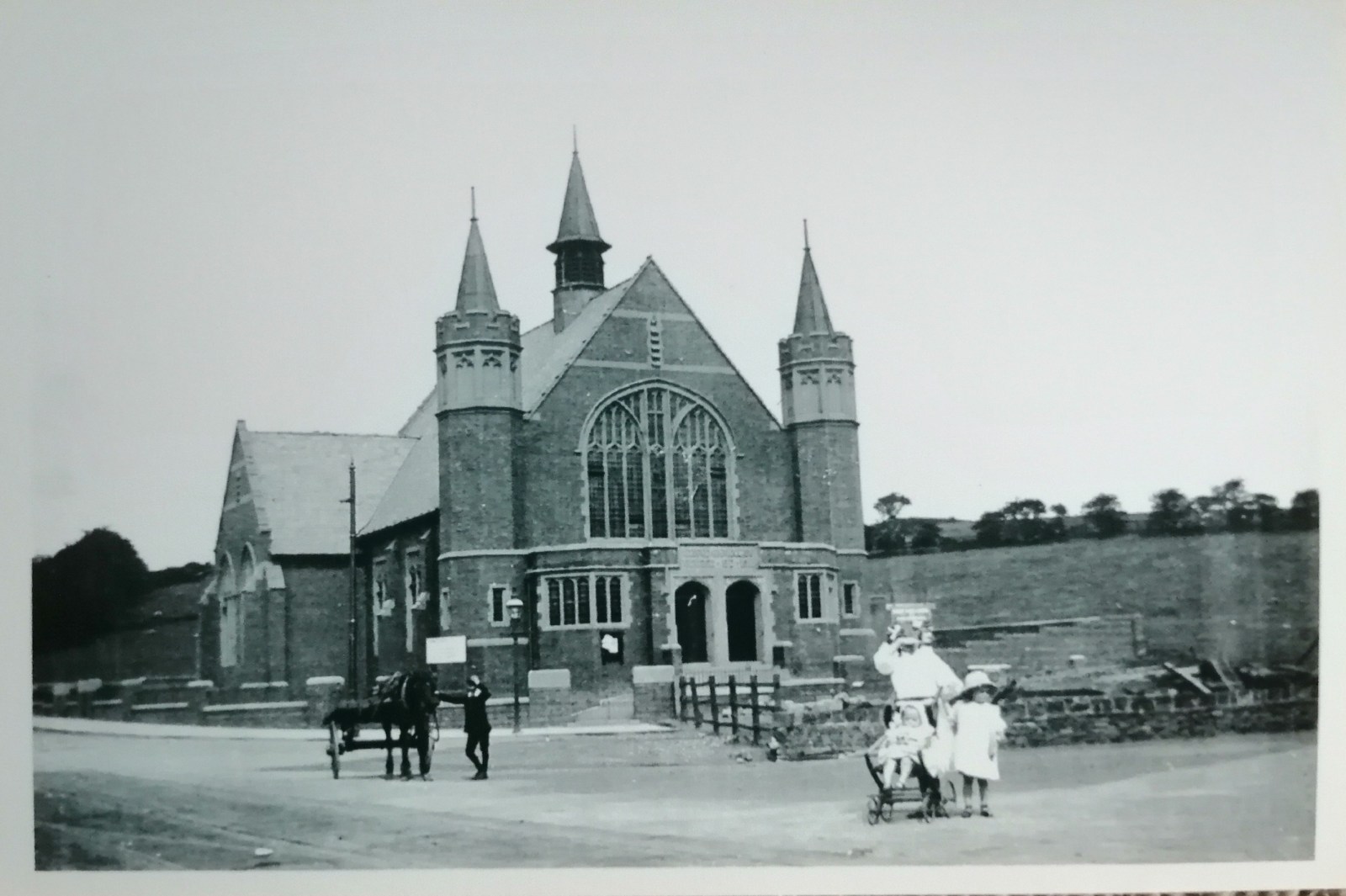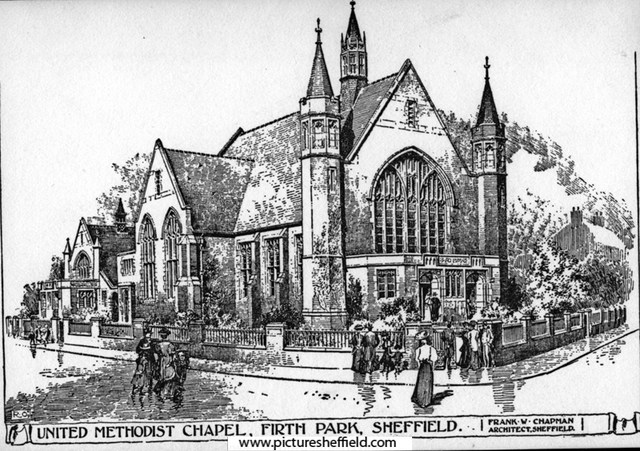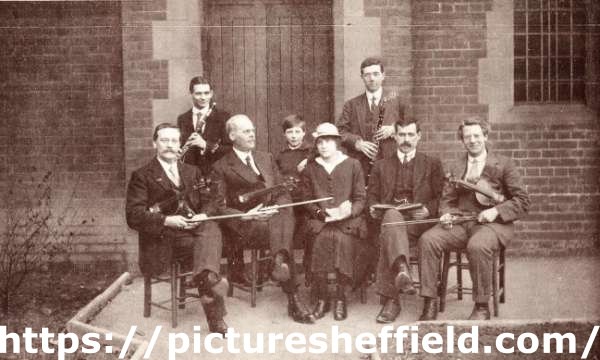Search the Community
Showing results for 'coal pit lane'.
Found 10,019 results
-

Unidentified Public Houses and Refreshment Rooms
Archaeo replied to Ponytail's topic in Sheffield History Chat
I misread the name, corrected. The street before Hawley Lane in the 1901 census was Silver Street Head so I was assuming they surveyed down from that end. So Hawley Croft must fall between nos. 3 & 5? -

Unidentified Public Houses and Refreshment Rooms
Edmund replied to Ponytail's topic in Sheffield History Chat
The Reindeer Inn was on the corner of Hawley Lane and Hawley Croft. -

Unidentified Public Houses and Refreshment Rooms
Archaeo replied to Ponytail's topic in Sheffield History Chat
1901 Census (only heads named) - 1 Hawley Lane - Mary Horan, Provision dealer Back of 1 Hawley Lane - John W Horan, mining engineer 3 Hawley Lane - Joe Adamson, Sheffield Water Co labourer 5 Hawley Lane Old Reindeer - Frederick Booth, Inn Keeper -

Unidentified Public Houses and Refreshment Rooms
Archaeo replied to Ponytail's topic in Sheffield History Chat
I think this may be a view along Hawley Lane, looking towards the junction with Silver Street Head. The very narrow width of the street, the step out in the building line at the corner, and the proximity and angle of the opposing properties on the street at the end all match. Another photo, u09582, appears to be standing at the end of the road looking along Silver Street Head where you see the corner of the building at the end of this photo. This would place the photographer about here (on 1890 OS Town Plan): -

Unidentified Public Houses and Refreshment Rooms
Edmund replied to Ponytail's topic in Sheffield History Chat
Welcome Samuel Gillatt, son of George (scissor forger) and Caroline, was born on 27th August 1867. His main career was as a file cutter, but he may have started catching rats to be worried by dogs. By 1901 Welcome and his wife Ada were at 165 Woodside Lane with 5 children, one of whom was Welcome junior aged 4. His first newspaper advert appears to be in the Mexborough & Swinton Times of 3rd December 1897: WELCOME GILLAT. Ratcatcher, open for engagements. Dealer in Ferrets. Ferrets lent on hire, ratting or rabitting. :- 25 Court, 2 house, Woodside Lane, Sheffield. In December 1901 as well as his ratcatching services, he advertised "Ship rats for sale" - an unusual Christmas present, or for worrying by dogs? In February 1919 Welcome was appointed "Official Ratcatcher to the City". This was the first time such an officer had been needed, but was due to the plague of rats which had grown during the war, mainly due to the increase in land under cultivation. Then as the winter weather arrived, they migrated to built up areas. Welcome had been catching rats for forty years, catching them alive with ferrets and a wire cage. Applications for his services had to be made through the Cleansing Department Superintendent. In March he caught 1,050 rats in four weeks, beating all previous records. Yorkshire County Council were granting 2d per rat killed to Sheffield City Council. In October 1919, Welcome had a great success in catching a wily old rat that frequented the Cathedral neighbourhood. This rat was fancied to be 'a grand old man' with a long grey beard and a splendid voice despite his years. Supposedly the rat danced on the Cathedral tombstones, and was a politician, addressing mass meetings of his tribe in Paradise Square each night. Welcome set out to 'bag him' and after a successful and exciting hunt declared "Yes, he's a beauty - he weighs just over a pound and will be one of the biggest we have in England". Welcome was so successful in his work that a bag of 40 rats a day was now considered a good one. In the "good old days" a bag of 375 in a day was possible. In August 1922 Welcome caught an outstanding specimen weighing 1 lb 5 oz at Mr Simmerson's house, 100 Nottingham Street. Mr Gillatt had netted the entrance to several holes when the rat was discovered in a fowlhouse. It jumped one of the nets and as it was making its escape Welcome grabbed it and captured it alive. He took it to the Telegraph offices to show it off, whereupon it attempted to snap at its captor. Welcome intended to have it stuffed, as "the finest specimen I have ever captured". He estimated that over his career he had killed tens of thousands in Sheffield alone, plus those in outlying districts. In 1927 he tamed and trained a fox, with the intention of using it to catch rats. In 1939, still the Corporation rat-catcher, he was living with Ada at Firshill Terrace. Welcome died in 1940. Welcome junior joined the Royal Navy in June 1915 as an armourer and was discharged in November 1921. He married Elsie McKay, also of Woodside Lane, in November 1919 and they had two girls, Edna and Joyce. Welcome junior died, a 33 year old bus conductor, at Lodge Moor Hospital in February 1930. Welcome senior's son Ernest, a fireman, married Frances Brayshaw in September 1927 and they named their son (born early in 1931) as Welcome. Welcome died in Sheffield in Oct/Nov/Dec 1996, and his wife Lilian Anita in 2018. Presumably this chap was the licensee on the photo of the unidentified licensed premises. -

Unidentified Public Houses and Refreshment Rooms
Ponytail replied to Ponytail's topic in Sheffield History Chat
Wonder if there's a connection. Link to: Welcome Gillatt, rat catcher, 169 Woodside Lane. https://www.sheffieldhistory.co.uk/forums/topic/7121-fine-name-not-sure-about-the-job/ A view of the abode of Welcome Gillatt. s20731 No. 163, corner shop, 165 and 181, Woodside Lane October 1957 demolished in 1959. Photographer:Kodak Medical Photography per Medical Officer of Health. Did he or his son move on to be a publican? -

Unidentified Public Houses and Refreshment Rooms
Ponytail replied to Ponytail's topic in Sheffield History Chat
Ref No:u01080 Unidentified Licensed Premises, possibly Crofts area. Date period 1900-1919. Suggestions include Button Lane. Street name appears to end in T L possibly something Lane. A search of the Picture Sheffield website will be needed for this one. I don't think we'll have anyone old enough to remember this one. https://www.picturesheffield.com -
If my memory serves me correctly it was the No. 17 bus that also took you round Attercliffe.. Hence my dad's "All round Attercliffe to get to Sheffield" when you didn't get straight to the point explaining something. It was the 33 from Lane Top and the 75 from Firth Park terminus that took you the more direct route into Town.
-

Attercliffe Swimming Baths and the Attercliffe Library
Ponytail replied to a topic in Sheffield History Chat
Attercliffe Baths where I learned to swim. Taken by a double decker bus from Hatfield House Lane Junior School, we all boarded the bus with our cossies wrapped in a towel. Remember the very first time, entering the building we had to pass by the Slipper Baths where those not so fortunate to have a bathroom in their house went for a proper bath. As we passed we could hear singing and splashing coming from the locked door, we all giggled. Next was the introduction to swimming by a woman dressed in baggy tracksuit bottoms who shouted like an Army sergeant, she'd have a pole positioned just out of reach as you tried to achieve your first 25 yard swim for a certificate. Remember trying to reach for the pole as I struggled only for it to be snatched out of reach. "No!!" she bellowed. She didn't stand for any nonsense, from anyone. A very formidable lady. -
From Firth Park Terminus the alternative tram route into Town was the longer, but more interesting route for an avid train spotter ,via Attercliffe and along Brightside Lane and the engine sheds!
-
Firth Park Road/Owler Lane at the junction with Barnsley Road, Firvale with the Gates of the Workhouse and Sheffield Union Hospital left, St. Cuthberts Church and looking towards Trinity Methodist Church. The new Sheffield Union Workhouse opened in 1881. From 1906 it was known as Sheffield Union Hospital, later Fir Vale Hospital. When the hospital transferred to the local authority in 1930 it was renamed City General Hospital, whilst Fir Vale Institution became Fir Vale Infirmary. In 1967 the Northern General Hospital was formed by the amalgamation of City General Hospital and Fir Vale Infirmary. St. Cuthberts first Vicar Rev L. E. Day.
-

Heppenstall Lane, Attercliffe
Ponytail replied to Sheffield History's topic in Sheffield History Chat
No. 6 Heppinstall Lane and No. 523, Attercliffe Road former premises of Alfred A Markham and Son, funeral director with B and J Plant, plumbers No. 515 Attercliffe Road. 1970.s27233 -
It would probably have been Gentian Violet, an antimicrobial dye derived from coal tar. It's still around... but it's use much restricted in the UK nowadays after clinical research and availability of better alternatives to prevent/treat infection.
-
My guess for this one: an artist's impression of the planned Crofts Buildings in Campo Lane. The actual buildings were quite different to this when completed, but the road layout is similar, even down to the lamp post on the corner. See Croft Buildings as built In 1898 the City Surveyor prepared for a competition amongst architects to design workmens' dwellings on the flats system for this area, the cost not to exceed £10,000 (nothing more was ever heard of this) - possibly the illustration was from this competition?
-
Hi. I did a 3month study on William Higgitt/Higgett. I found where the family had lived from first coming to Sheffield, till his death and his son's. None of the addresses were Yew Lane.
-

Robin Hood Inn, Little Matlock, Stannington, Sheffield
Ponytail replied to Sheffield History's topic in Sheffield Pubs and WMC's
Robin Hood PH., Greaves Lane, Little Matlock. Ron Clayton took photographs of Closing Day 28th August 2011, when it was known as Robin Hood and Little John Inn. https://www.picturesheffield.com/frontend.php?keywords=Ref_No_increment;EQUALS;u08097&pos=1&action=zoom&id=35482 https://www.picturesheffield.com/frontend.php?keywords=Ref_No_increment;EQUALS;u08102&pos=9&action=zoom&id=66523 For more photographs see Picture Sheffield. https://www.picturesheffield.com/ -
Hind or Iron Wheel. First rental recorded 1581. Hind Wheel Mill, Rivelin Hotel, Tofts Lane, and Albion Terrace, Roscoe Bank, in background, Rivelin Valley. 1904. s10367 t01406 Hind Wheel Mill and Footbridge, Rivelin Valley https://www.picturesheffield.com/frontend.php?keywords=Ref_No_increment;EQUALS;s10366&pos=17&action=zoom&id=13508 s10364 First recorded in 1581 For further information see: Water Power on the Sheffield Rivers edited by David Crossley Ref: 621.21 SQ For more information about the footbridge (plank bridge) see: Crossin' O'er Davey 624.2 S Waterwheel at Hind Wheel Mill, Rivelin Valley. October 1952. s10365 Drained pond at Hind Wheel Dam, Rivelin Valley. 27th March 1967. https://www.picturesheffield.com/frontend.php?keywords=Ref_No_increment;EQUALS;s32865&pos=3&action=zoom&id=66254
-
Revell Grange, Bingley Lane. August 1991.Picture Sheffield No s27895 Front Elevation. Picture Sheffield No. s27893 Revell Grange, seat of the Revell family who moved there from Nethergate Hall in 1742, they were Roman Catholics, and the private chapel was in continuous use as a Mass centre until 1828, mission reopened 1855's. See The Lord's House, a history of Sheffield's Roman Catholic Buildings 1570-1990 , Denis Evinson Ref: 282.4274 S. also Transactions of the Hunter Archaeological Society Vol 9 1964-69 page 196 S https://www.picturesheffield.com/frontend.php?keywords=Ref_No_increment;EQUALS;s27896&pos=4&action=zoom&id=30630 Rear elevation and Chapel, Revell Grange, Bingley Lane. s27894 https://www.picturesheffield.com/frontend.php?keywords=Ref_No_increment;EQUALS;s27897&pos=5&action=zoom&id=30631 Stables, Revell Grange. https://www.picturesheffield.com/frontend.php?keywords=Ref_No_increment;EQUALS;s27898&pos=6&action=zoom&id=30632 https://www.picturesheffield.com/frontend.php?keywords=Ref_No_increment;EQUALS;s27899&pos=7&action=zoom&id=30633 Revell Grange, Bingley Lane, Stannington front elevation. July 1974. w01504 From the West End. w01503 Photographer: David Cathels Revell Grange Grade II Listed Building. 8th August 1985. https://historicengland.org.uk/listing/the-list/list-entry/1132865 https://en.m.wikipedia.org/wiki/Revell_Grange https://cityseeker.com/sheffield/878723-revell-grange
-
Unidentified Houses. Information on back of picture reads, 'William Higgitt, father-in-law of Henry Chambers, Manager of Tinsley Park Colliery, c. 1910', However please see notes below. s10484 Henry Chambers married Hephzibah Higgett in 1852. William (her father) lived at the Tinsley Park Colliery until he retired. Then in the 1861 census is recorded as living at Higgetts Houses on Attercliffe Common and in 1871 on Tinsley Road or Sheffield and Rotherham Road . He died in 1875 so the houses could be in this area. Alternatively the Woodhouse 1893-1894 Directory lists a William Higgitt, No 179 Sutherland Road. Suggestion: Church Street, Ecclesfield. There has been another suggestion it could be the bottom of Yew Lane. On the basis of this it is uncertain whether the date of 1910 is correct or what the connection with William Higgitt is.
-
Firth Park United Methodist Chapel, corner of Stubbin Lane and Sicey Avenue, c. 1955. arc01195 Older residents of the area, including my family used to call it Bottom Chapel and Top Chapel was up Bellhouse Road on Winkley Terrace. My dad in his younger years along with his brother Alf attended Boys Brigade here. In the later 1930's he taught for a while at the Sunday School; tending to get carried away with elaborate storytelling so I was informed, the children calling him "Mr. Bob." Firth Park Methodist Church & Firth Park Terminus from the entrance to Firth Park.
-
Firth Park United Methodist Church. s05055 Firth Park United Methodist Church, corner of Stubbin Lane and Sicey Avenue. Built 1911, Architect Frank W. Chapman. Probably taken 1911. Another image from 1911 https://www.picturesheffield.com/frontend.php?keywords=Ref_No_increment;EQUALS;arc06750&pos=37&action=zoom&id=106021 Rev. George Carver, Minister of Firth Park United Methodist Church 1911-1918. https://www.picturesheffield.com/frontend.php?keywords=Ref_No_increment;EQUALS;arc06734&pos=21&action=zoom&id=106005 Congregation outside Firth Park United Methodist Church, possibly on or around the time the church opened in May 1911. https://www.picturesheffield.com/frontend.php?keywords=Ref_No_increment;EQUALS;arc06753&pos=38&action=zoom&id=106024 Firth Park United Methodist Church Orchestra who will perform at the Church Bazaar. 1917 arc06749 Image from Firth Park United Methodist Church Bazaar Programme, Apr 1917 (page 43) (Sheffield City Archives: X979/1/2). Ladies who will be serving at the refreshment stall as part of the Firth Park United Methodist Church Bazaar 1917. https://www.picturesheffield.com/frontend.php?keywords=Ref_No_increment;EQUALS;arc06748&pos=35&action=zoom&id=106019 Firth Park United Methodist Church, Sunday School Teachers. 1917. https://www.picturesheffield.com/frontend.php?keywords=Ref_No_increment;EQUALS;arc06747&pos=34&action=zoom&id=106018 Firth Park United Methodist Church 'Pleasant Monday Afternoon Meeting' Group. 1917 https://www.picturesheffield.com/frontend.php?keywords=Ref_No_increment;EQUALS;arc06746&pos=33&action=zoom&id=106017 Ladies who will be serving at the Congregational and Pleasant Monday Afternoon Stall as part of the Firth Park United Methodist Church Bazaar. 1917. https://www.picturesheffield.com/frontend.php?keywords=Ref_No_increment;EQUALS;arc06745&pos=32&action=zoom&id=106016 Children collecting and taking part in the opening day for Firth Park United Methodist Church Bazaar. 1917. (Children are named, assume they are the ones in the photograph.) https://www.picturesheffield.com/frontend.php?keywords=Ref_No_increment;EQUALS;arc06744&pos=31&action=zoom&id=106015 Trustees of Firth Park United Methodist Church, c. 1917. https://www.picturesheffield.com/frontend.php?keywords=Ref_No_increment;EQUALS;arc06743&pos=30&action=zoom&id=106014 Further images of individual "officers" can be found on the Picture Sheffield Website. https://picturesheffield.com
-
William Tozer (1894 - 1971), a grandson of Edward Tozer who was with Steel, Peech and Tozer, lived at fair sized house called Grange Cliffe in Ecclesall when he first married (1919) until moving to Sugworth Hall, Bradfield Dale in 1934. There is now a Grange Cliffe Close (cul de sac) in Ecclesall, around the junction of Millhouses Lane and Button Hill, so imagine that the Grange Cliffe house was demolished and the grounds were developed with the present homes. Does anyone know of any photographs of the original Grange Cliffe property, or have access to any maps from the 1920s showing the property? It is amazing how many substantial houses survived in Sheffield [like Endcliffe Hall, high lit by "Ponytail" in recent interesting article], but others were not so fortunate! Thanks Richard
-
My first visit to the School Dentist was the one at Hatfield House Lane Secondary School, being a pupil at the Junior School between 1956 - 1963. The experience, was I remember, nauseating. Entering the room told very abruptly to sit in a chair and the dentist appeared to come at me with a mask covering my nose and mouth. Gas must have been applied through it because the next thing I remember was the feeling of spinning round and round in the chair and feeling extremely sick. Then I was despatched out of the door with a something to cover my mouth with, think that was incase there was blood...... "Next!" I heard shout. Lysanderix, the experience has stayed with me as well, no wonder we dreaded the dentist.
-
Whilst we are on the topic of Victorian dentists I wonder how many of us were given the dubious “treat” of a trip to Owler Lane School for the extraction of an aching tooth? The early experience put me off dentists for life…and I am now 80!
-
Charles Brown's ballooning career: Brown's first balloon was exhibited from 17th July 1824 in a specially constructed building in a yard in Carver street, lately occupied by Wm. Hodgson and Co. Admission was 2 shillings for Ladies and Gentlemen, a shilling for working people and 1s 6d for families of over four people, but by the 23rd July had reduced to 1 shilling for the gentry and 6d for workers. This balloon was 35 feet in diameter, formed from tapering pieces of silk, 33 inches wide, over sixty feet long and in alternating colours of crimson and white. The car was beautifully ornamented and lined with crimson silk with a festooned canopy. Brown's first ascent had been in Sadler's balloon at Derby (William Wyndham Sadler was killed in October 1824 when his balloon hit a Bolton chimney, and his head hit the brickwork). Brown's second aerial voyage was made on Tuesday 10th August 1824 from James Hibberson's garden in Sycamore street. This first ascent in his own balloon was planned to include Brown's brother, but the balloon would not support two passengers. The Sheffield Gas Company provided him with 10,500 cubic feet of gas. The intention was to charge spectators to defray his costs, but attendance was low, as Park Hill provided free viewing for the crowds. Brown had never piloted a balloon previously, but successfully ascended and was in the clouds within ten minutes. Brown initially had to throw out two of his three bags of ballast (8 pounds each) and he eventually reached an altitude of over a mile (2,166 yards). After going through a brief snow storm, he passed Tickhill, and shouted to the people below using his hailing trumpet, though they didn't hear. He began rapidly descending and wanting to retain his last bag of ballast, removed his boots to throw out, however the balloon recovered before this was needed. He continued as far as Mr Pearson's rye field at Axholme. Several gentlemen who had followed him from Tickhill assisted recovery of the balloon together with local 'peasants'. In Bawtry a chaise was arranged and the party arrived in Sheffield (at the Twelve O' Clock Public House) at quarter to two a.m. His third flight was from Barnsley, with his balloon now named "Herschell", and was planned for 2 p.m. on 6th September 1824 from a piece of ground next to the Gas Works. Tickets at the Gas House Gates were 2s 6d or for admission to Mr Horsfall's timber yard in May Day Green tickets were 1 shilling. Due to the weather, the ascent was postponed to the next day (Tuesday). On this voyage he attained 3,190 yards, landing 2 miles from Ferrybridge at Sir John Ramsey's Park. His fourth ascent was from Wakefield at their Musical Festival. Brown's next flight was on Wednesday 10th August 1825 from Wright & Haslehurst's new cricket ground at the Top of the Park, Sheffield. For this flight he gave the added attraction of a crimson and white parachute being released with an animal attached, though this didn't happen due to storms. After a wait for a thunderstorm to disperse, and difficulties filling the balloon, it struggled to reach 600 feet as it was wet and heavy, and pedestrians pursued the balloon through the streets of Sheffield. People on the roof of the music hall in Charles street could hear Brown calling for people to follow him and give assistance. At about 5 p.m. the balloon cleared the town centre at 3-400 feet and was headed towards Heeley, landing at Brincliffe Edge. Wednesday 31st August 1825 at Hull was his next outing. On May 26th 1826 Brown took off from Beverley, landing at Thorne, however the wind was so strong, and with no assistance on landing, he had to let the balloon go - he advertised a reward for its return. "Herschell" was found at Swithamly Hall near Leek, the seat of Trafford Trafford Esq. whose wife saw it suspended over trees as the grappling hook had snagged a wall - the wall collapsed and the balloon ascended but the hook caught on a very tall tree, and with the help of 30 men it was secured and returned by post-chaise to Brown in Sheffield. Browns next ascent, with an improved "Herschell" was on Whit Monday 4th June 1827 from the Hyde Park Cricket Ground again. When Brown arrived at 3p.m., he was upset that his assistants had allowed the balloon to be damaged by gusts of wind. The ascent was reluctantly abandoned, until 11th June. For this ascent Charles was accompanied by his brother Roger. The next ascent was on 30th August 1827, from the piece of ground behind the Balloon Tavern in Sycamore street. On 6th September 1827 he travelled 10 miles setting off from Pontefract. On 6th October 1827 the venue was Wood street, Wakefield, opposite the Woodman Inn. Unfortunately Charles Brown was ill, so his younger brother Roger was to pilot the balloon. After delays, the balloon took off at about 5p.m. and disappeared into the clouds. But suddenly it re-appeared, making a rapid and apparently uncontrolled descent. The frantic voice of the aeronaut could be heard, and the balloon appeared to have collapsed. Due to his inexperience, when the balloon was buffeted by violent winds in the upper reaches, Roger pulled the wrong rope which allowed most of the gas to escape via the safety valve. He landed two miles away near the village of Flanshaw, and thousands of spectators ran in that direction, finding him with a broken foot and a head injury. A gig was found to take him to a local surgeon, and he suffered no permanent ill-effects. The Browns seem to have had a break for a few years, but in July 1838 Charles announced plans to make two ascents in his new balloon, the "Great North Star", constructed solely by Brown, from the Botanical Gardens on Thursday 2nd and Monday 6th August 1838. The Thurday event was cancelled due to the weather, and no gas being available the following day. On the Monday, Brown was accompanied by Mr Spring of the Masbro' Brewery. The balloon almost hit the top of the lodge's stone gateway, avoided by Brown putting his hands on the stonework, and Spring throwing out ballast. They passed over Doncaster, landing near Wadworth, then were escorted with music, in a cart to Tickhill, thence to Sheffield. A further ascent from the Botanical Gardens was planned for Monday 13th August 1838, it being a Royal Holiday (Queen Adelaide's birthday). A crowd of about 10,000 assembled. However there was insufficient gas due to water in the pipes and the ascent was deferred til the next day. On the Tuesday there was still insufficient gas to be able to lift Brown, so at 7 p.m. to avoid the risk of violence by the crowd, the balloon was sent aloft unmanned. It landed almost undamaged at Hackenthorpe. On 24th August 1838, Brown and the balloon were at Newcastle-on-Tyne, and he had two companions in the car with him. On Tuesday 11th September 1838 Brown made his thirteenth ascent with the "Great North Star" at Glasgow. Being short of ballast due to lack of buoyancy of the gas, the balloon was whirled about, smashing a window and breaking a chimney. On 25th September 1838, a launch from the Park cricket ground was planned. At noon the balloon was filled with 50,000 cubic feet of gas at the Gas Works near Sheaf-bridge, and was able to carry three passengers over the retort house. However by 4p.m. despite the addition of locally generated hydrogen it was unable to lift a single man. Damage to the envelope allowing release of the gas was stated as the cause. On 5th October 1838 a private flight was made from the Gas Works yard. Brown's brother Roger and another gentleman were on board. The gas was unsatisfactory and the balloon came down near Clough House, where one passenger alighted and the balloon managed to get as far as the Chesterfield Road, 3 miles from town. On 9th October 1838 a flight from the Piece Hall at Halifax was planned but due to poor availability of gas it could not carry a pilot and was let loose unmanned, arriving at Barnsley slightly damaged. A flight of the "North Star" was planned for 7th September 1839 from Hyde Park Cricket Ground but postponed due to water in the gas. Crowds of lawless people had got over the walls and fraudulently claimed refunds, threatening violence when challenged. Their threats to tear the balloon to pieces was carried out and Brown lost considerable money. Brown announced that his new balloon "Britannia" would be launched from the lawn by the side of the bear pit in the Botanical Gardens on 19th September 1843 - his 41st trip. The rate of fill didn't allow a launch. The next launch was from the yard of G.O. Brown & Co near the New Gas Works, but low numbers paid admittance, most watching from the Hyde Park hill. However Brown did make it as far as Lincoln. After this he did little flying, but kept up an interest, and accompanied his son to Newhall Gardens, where the son Charles flew. In January 1856 Charles Brown was an expert witness in the County Court case of Gypson v. Turner. He knew both parties. The plaintiff was Richard Gypson, formerly of London but currently of Pyebank, Sheffield, who wanted to recover £20 8s 6d from Edwin Turner, a Wicker butcher, the balance of account for "instruction in the theoretical, experimental and practical science of aerostation". Gypson was an aeronaut of 25 years experience, and was engaged in 1854 for an ascent from Newhall Gardens. Turner was keen to accompany him, but the gas in use was of poor quality and would not support two people, so he was disappointed. However he was so keen to make an ascent, that he told Gypson he would even go to the expense of having a balloon of his own. Terms were agreed to build a balloon in Sheffield, together with a series of model balloons to assist instruction, and the following June Gypson came to Sheffield and stayed with Turner for seven weeks. During this time Turner cut off the gas pipe to his sitting room so that he could inflate balloons. Finally Gypson arranged a flight from Newhall for Turner, the balloon being filled at Saville street gas main, but Turner was so excited for his journey that he got into the car and was conveyed out of control towards Newhall. Due to the high wind the balloon hit a tree and a large hole was made, so the balloon fell - however Gypson's instruction paid off and Turner conducted himself safely. Still enthusiastic Turner and Gypson arranged to borrow the balloon of Mr Simpson, Cremorne Gardens, for two ascents. This balloon ascended to two and a quarter miles and landed near Worksop, but due to the crowds sustained some damage. As the second ascent from Barnsley had already been advertised, Gypson was instructed to repair the balloon which he did in Mr Shortridge's room at Barker Pool. Gypson travelled to Barnsley to make arrangements, but Turner, possibly frightened by his experiences, declined to make the Barnsley ascent. Gypson tried to obtain his charge of £5 from Turner without success, hence the court case. The newspaper account of the trial is quite entertaining and can be read here: Independent 26th January 1856 some further detail of mishaps here: Early flying accidents

